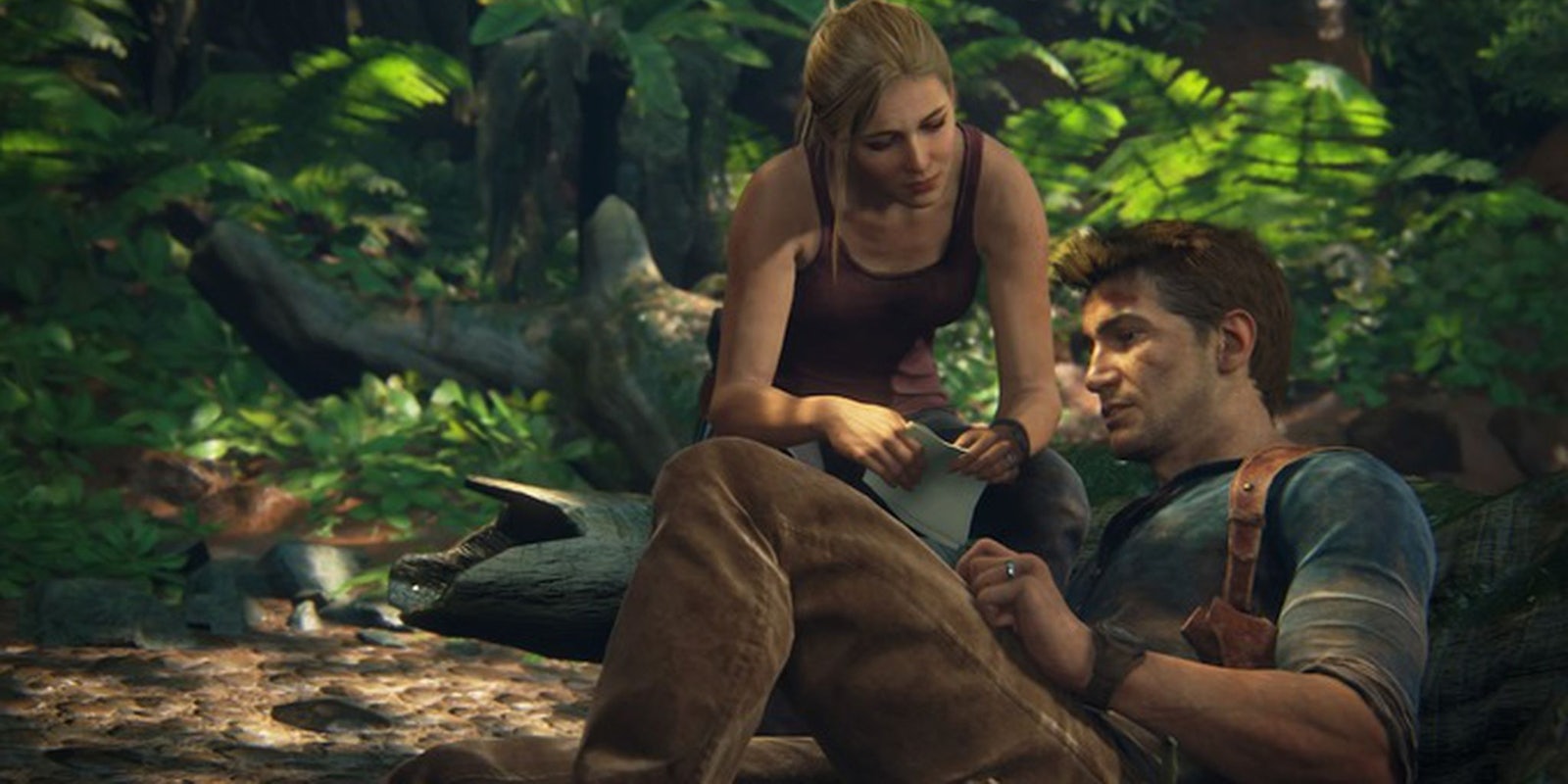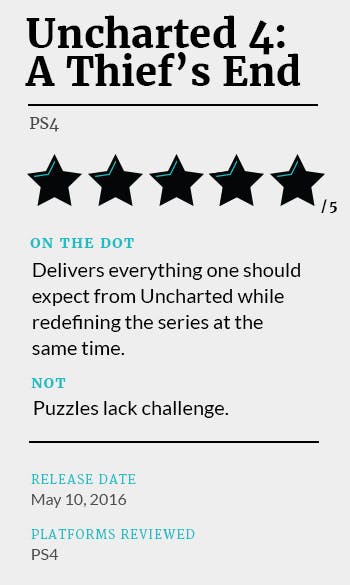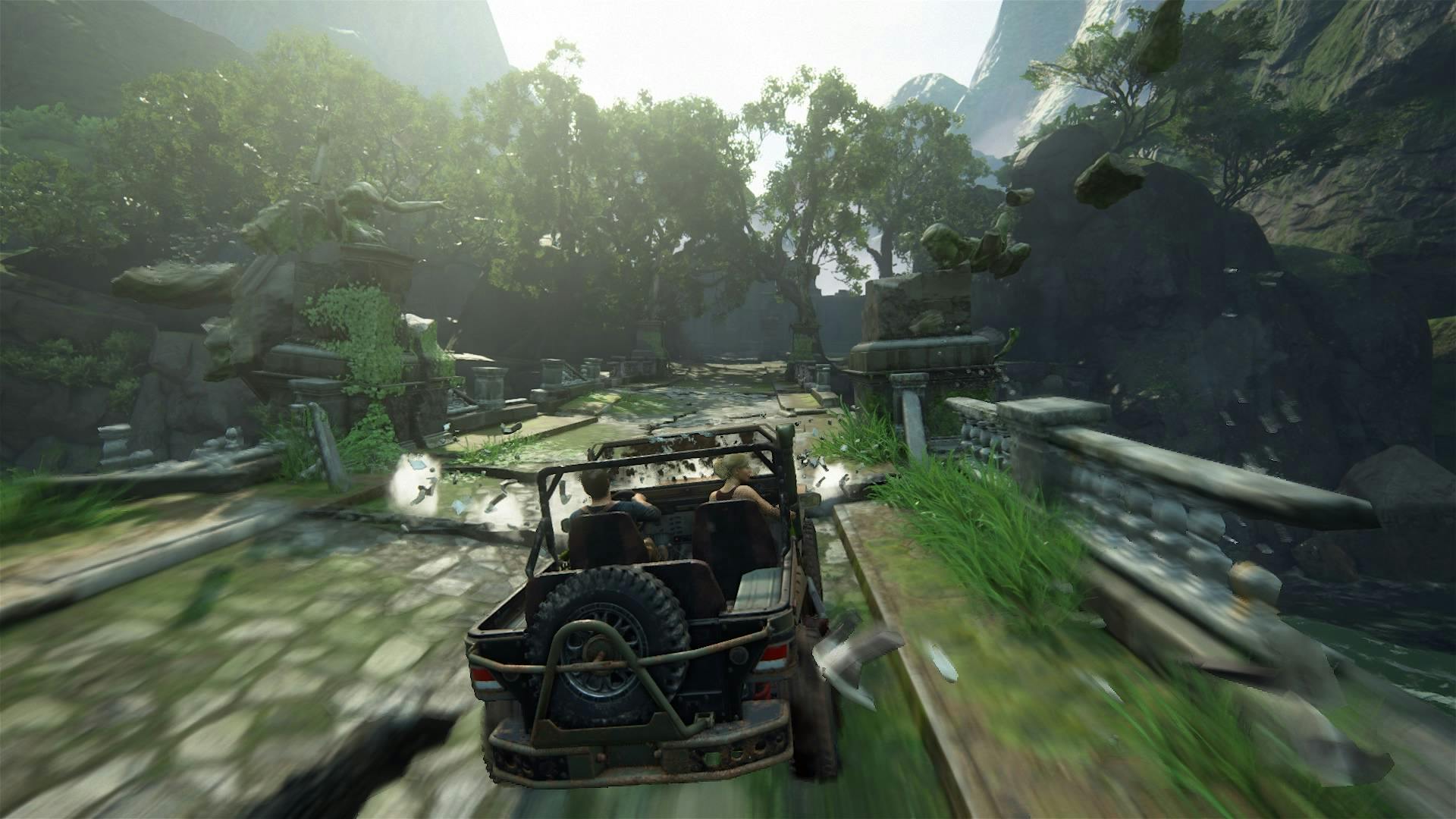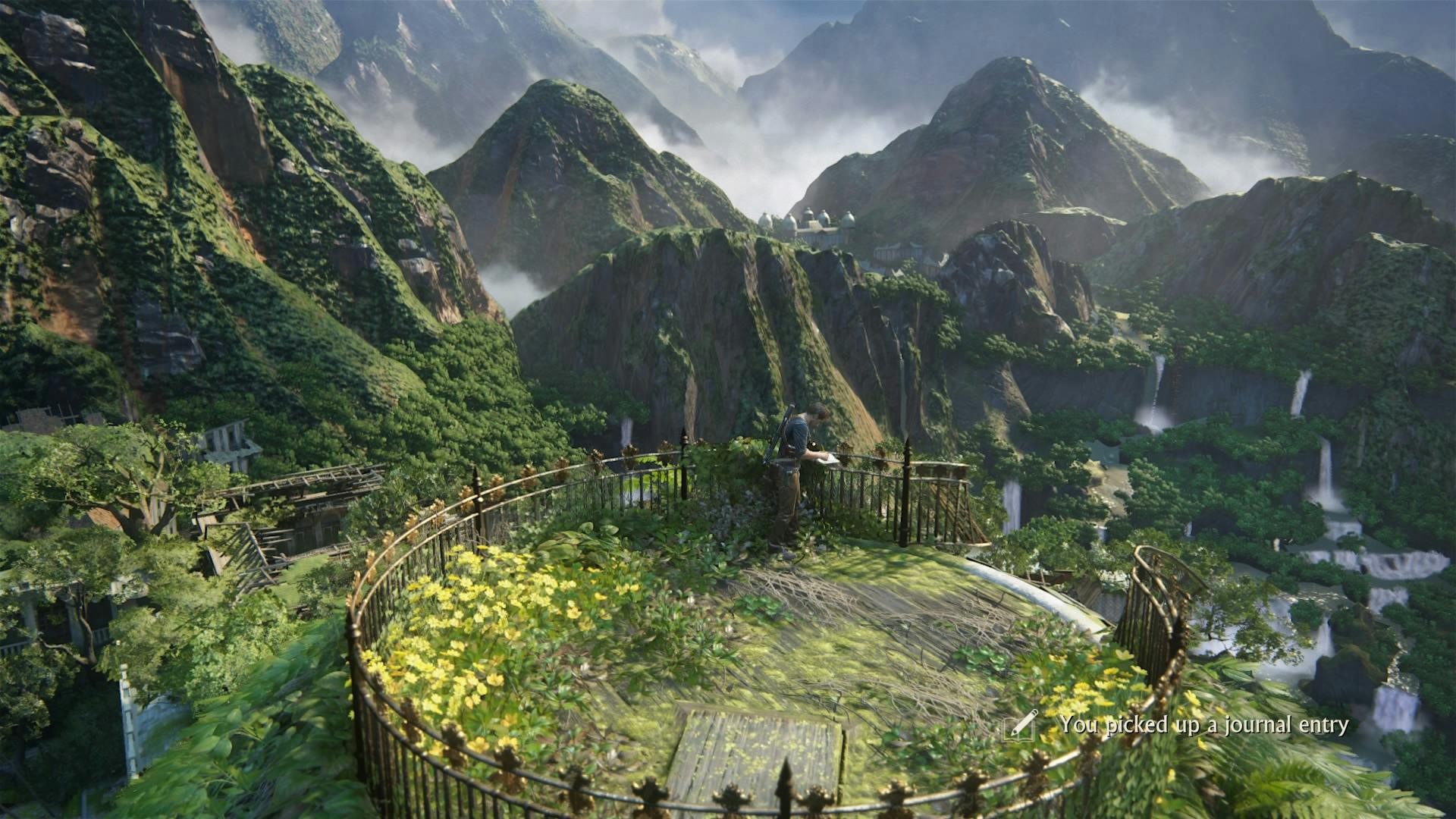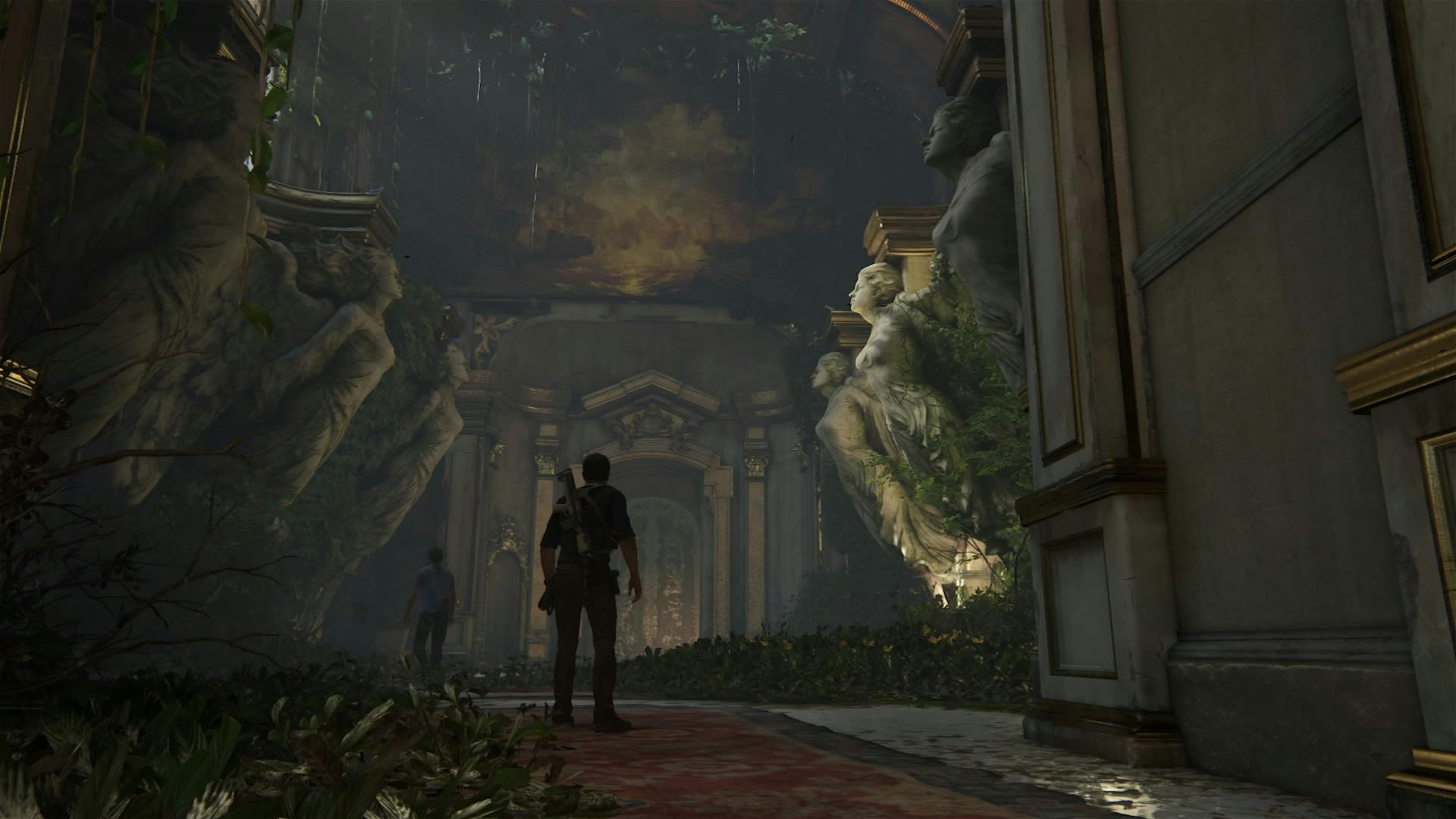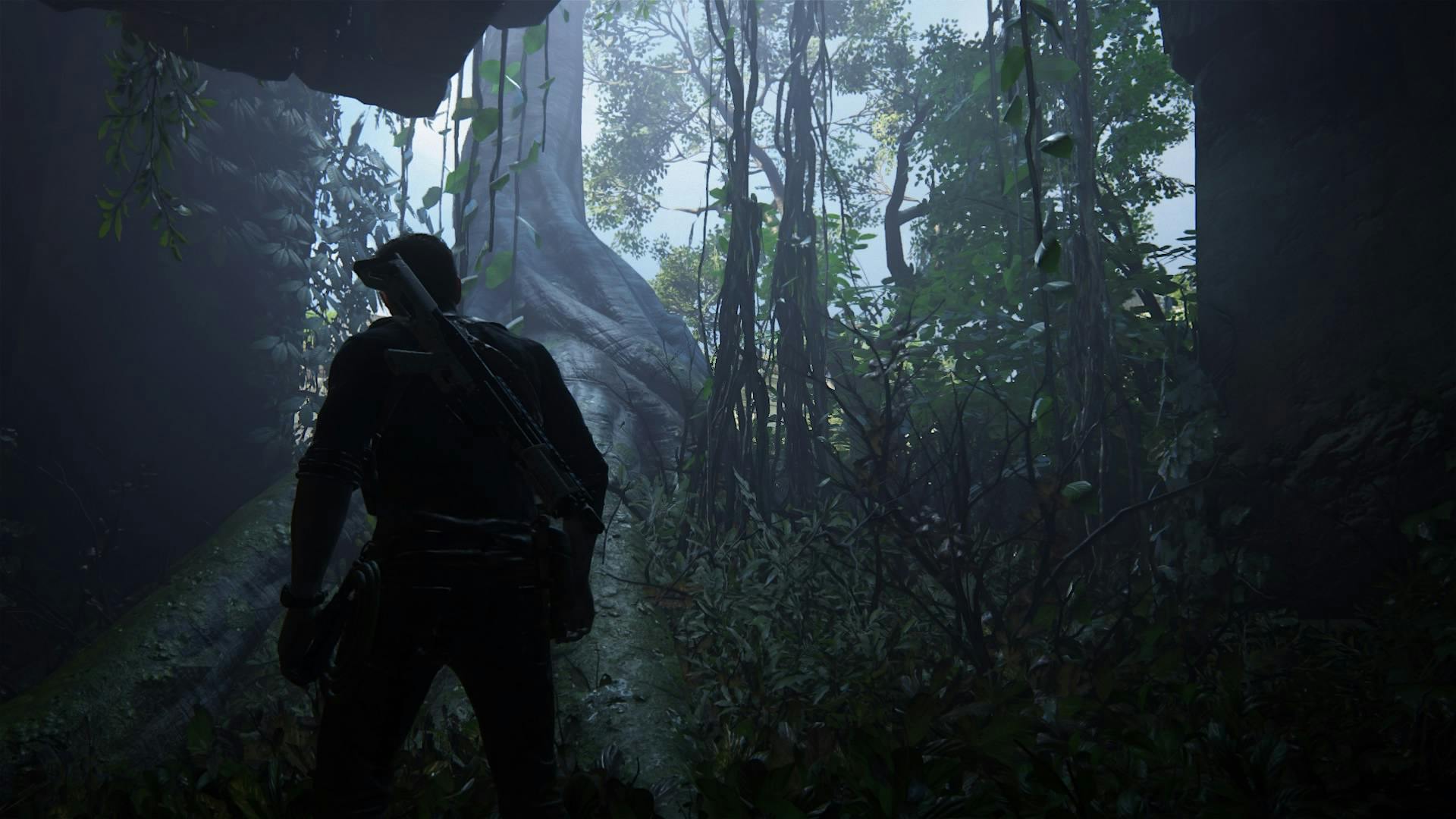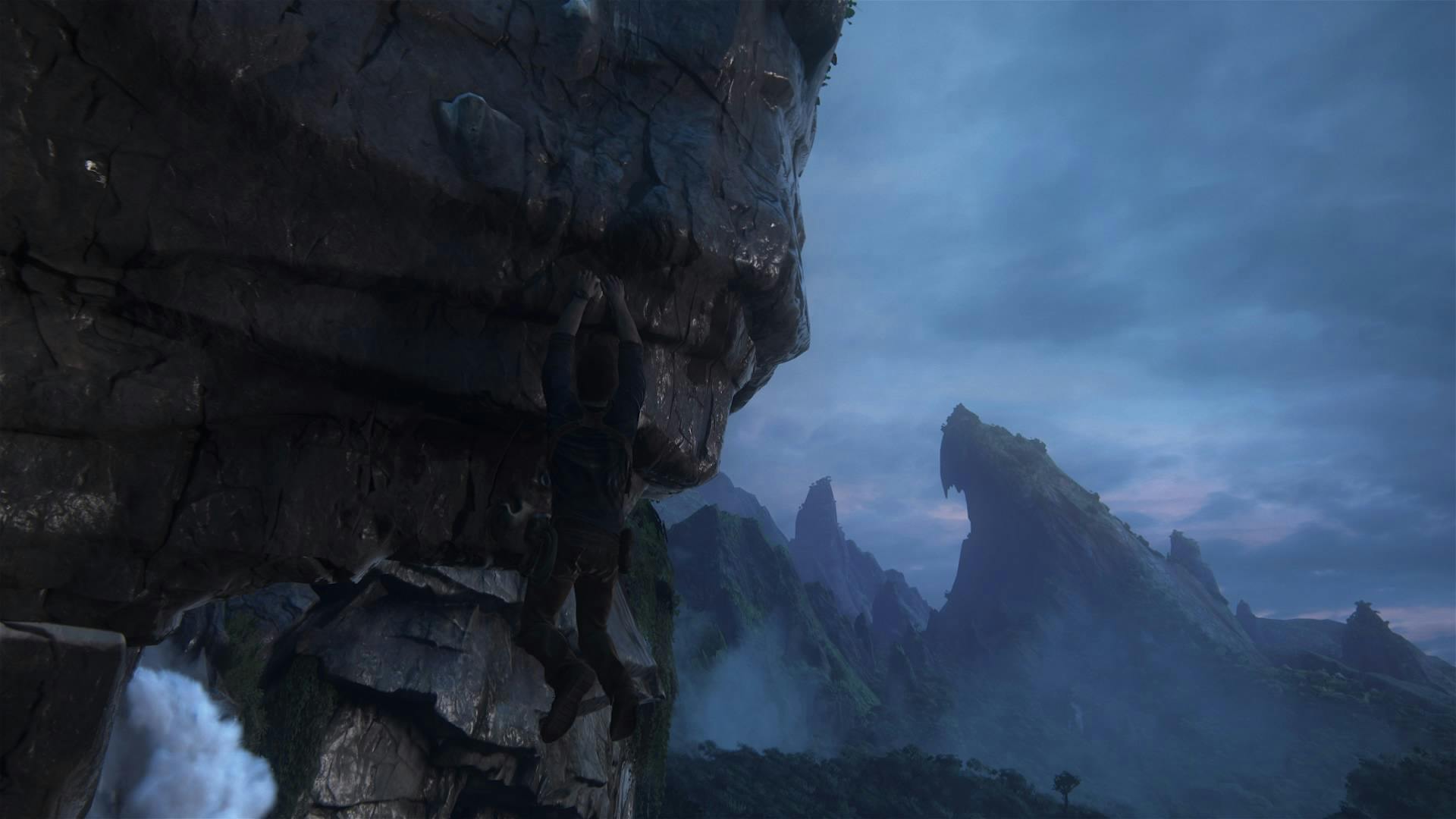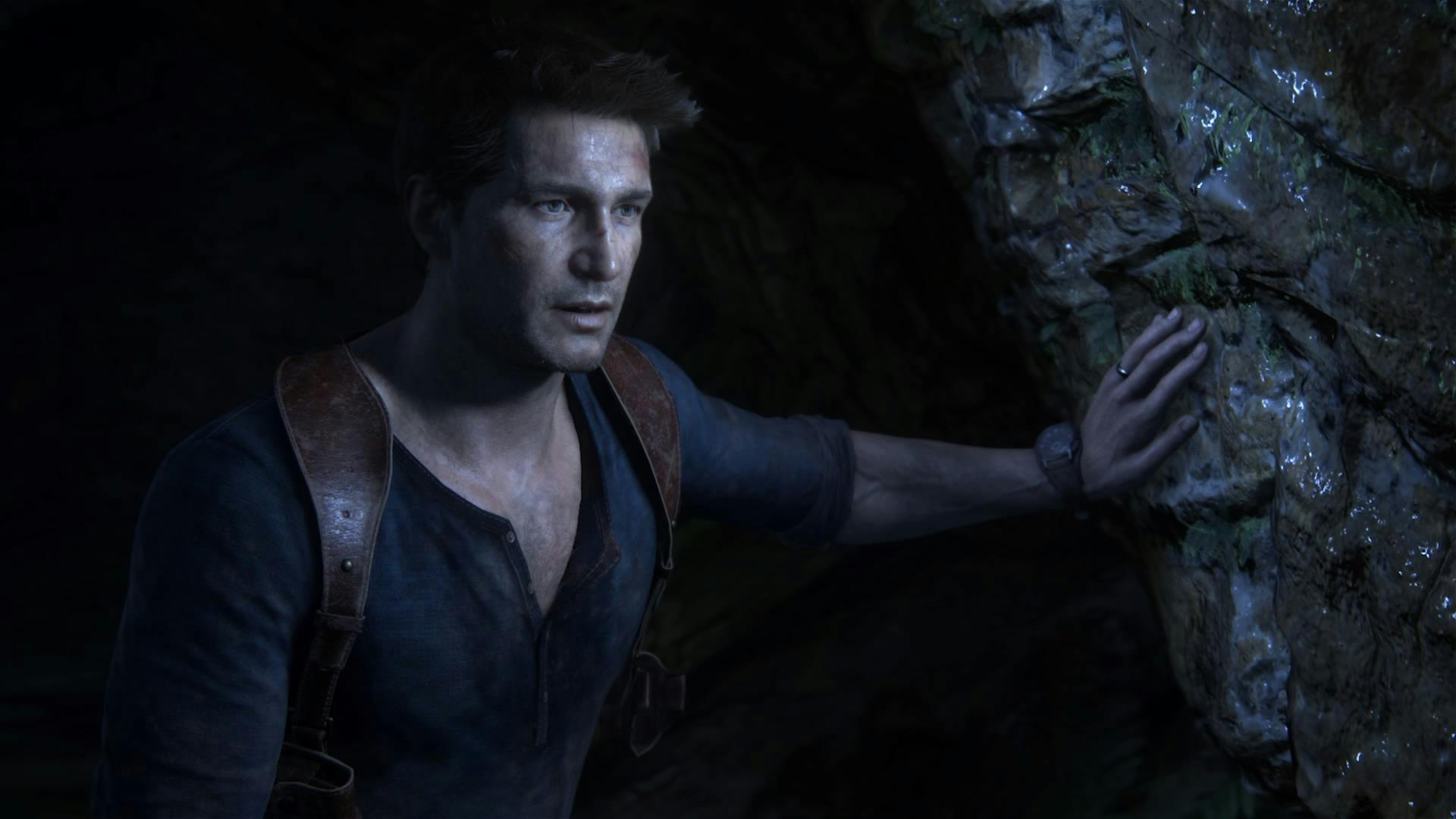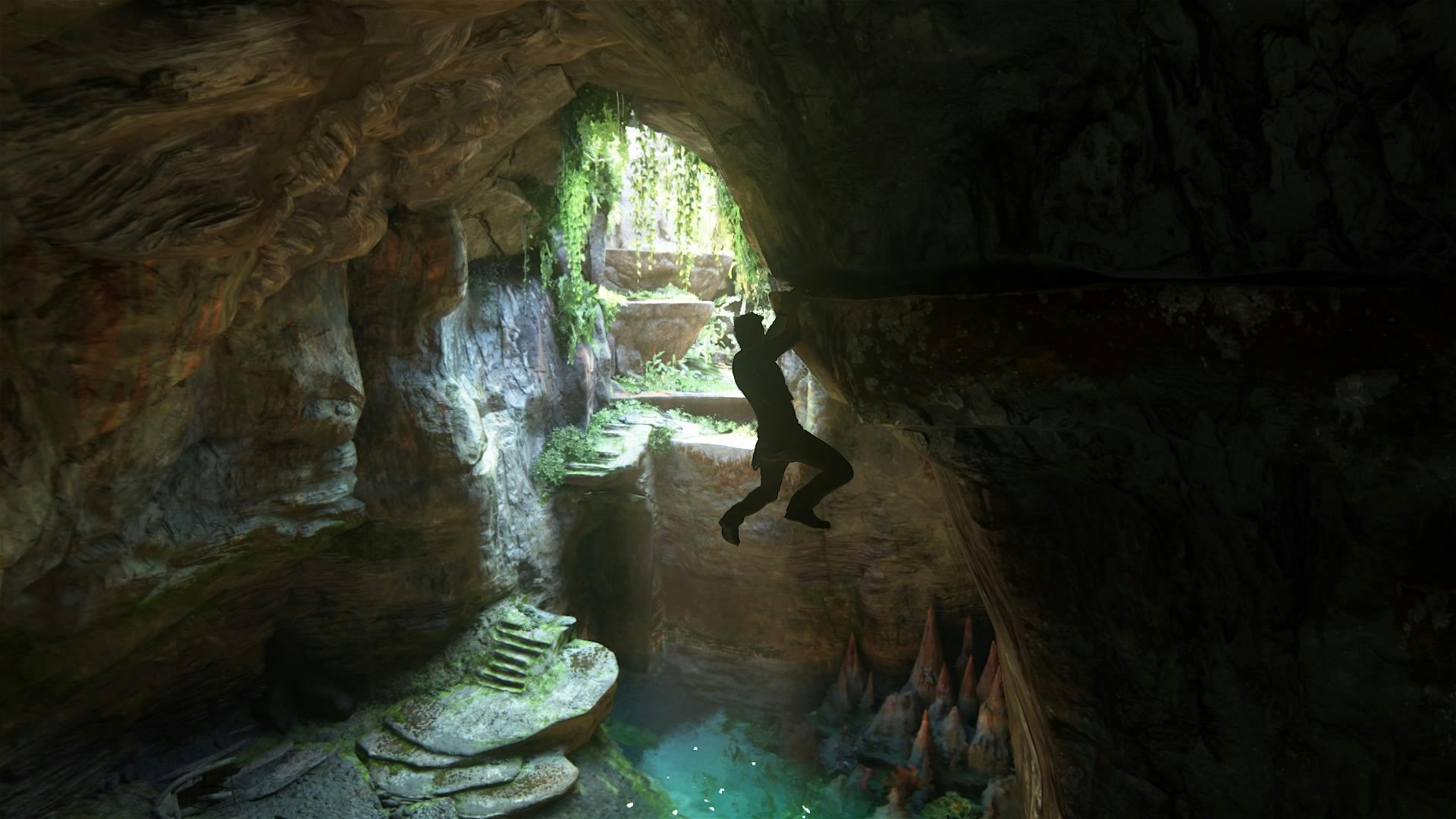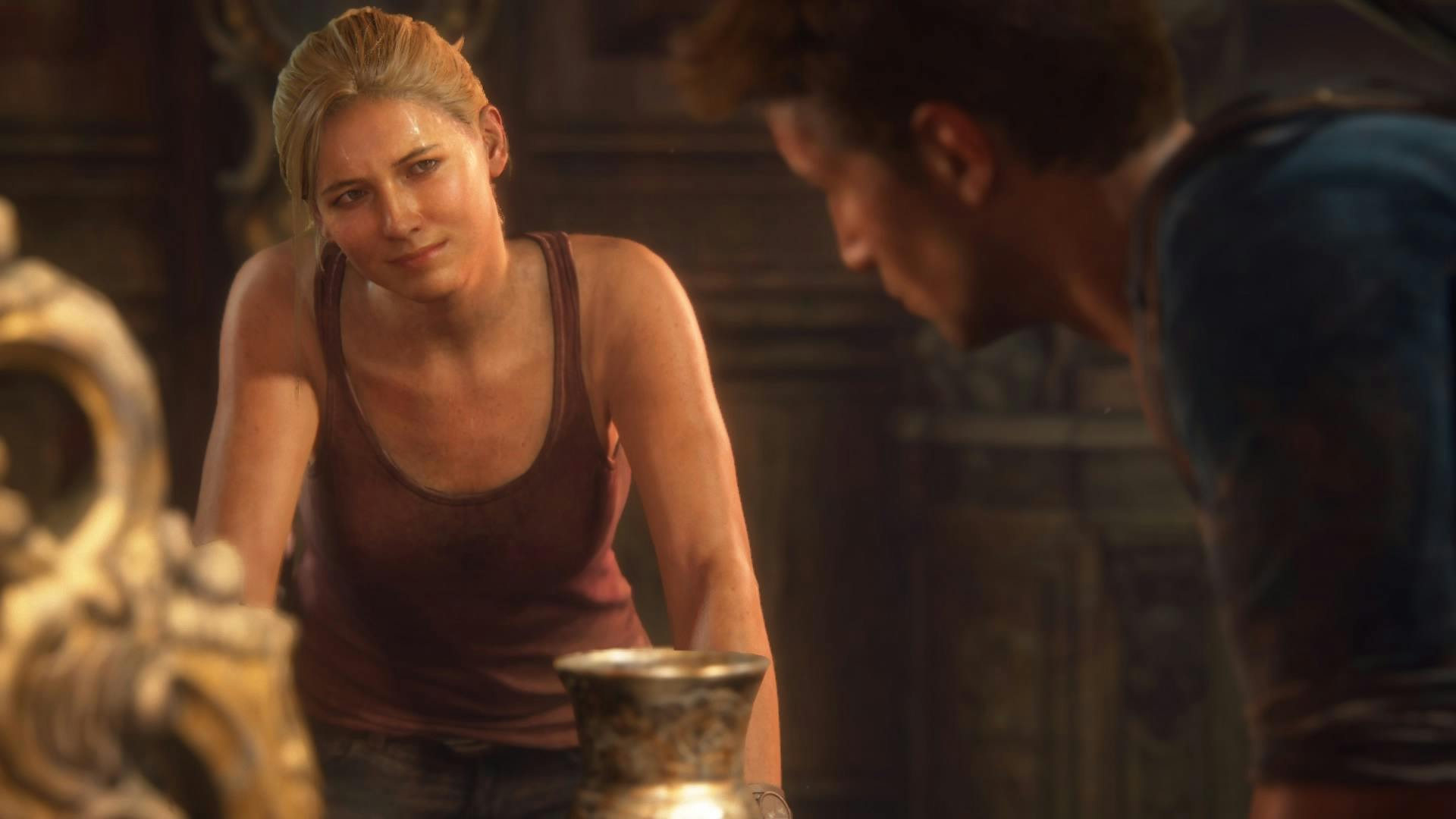Uncharted 4: A Thief’s End is a bittersweet reminder of the rarity of closure in long-running game franchises. In an entertainment field with countless open-ended conclusions and implied continuity into endless sequels, the conclusive nature of Naughty Dog’s latest game is a pleasant anomaly. It’s a journey worth relishing, rife with all the dangers and obstacles fans expect, while managing to redefine what an Uncharted game can be.
Uncharted 4’s writers, Neil Druckmann and Josh Scherr, understand how real people assess risk, especially when they have something to lose. You can clearly see how series protagonist Nathan Drake has embraced an ordinary life with mostly steady work. When he learned that his brother Samuel is in desperate need of his treasure-hunting skills to pay a debt, Nate tries to come up with every excuse not to go through with it. It’s reminiscent of one of Breaking Bad’s key storytelling devices, where every high-risk decision is made only after all the more reasonable options have been exhausted. Uncharted 3’s theme of knowing when to walk away is reprised through series mainstays Elena and Sully. Even Nathan often acts as the voice of reason. This maturity and common sense is jolting in a series known for peril and adventure.
As a brother who was never mentioned in prior Uncharted installments, Naughty Dog knew that a single line or scene to justify Sam’s sudden appearance wouldn’t be enough to make him a worthy cast member. The studio wisely went all in, giving him considerable screen time to reconnect with Nathan through their current circumstances and fleshed-out flashbacks. Uncharted 4 is so liberally front-loaded with scenes featuring Sam that you don’t have the opportunity to question his legitimacy as an Uncharted supporting character.
Between the two writers and the trusty talents of voice actor Troy Baker, it doesn’t take long to appreciate Sam’s depth as a character. He’s confident and charismatic but is clearly in awe of Nathan’s death-defying talents. Sam never tries to steal the spotlight from his brother, though the pair get to share equal screen time across multiple chapters. These moments of fraternal bonding can be especially poignant. The fact that he hasn’t logged as many treasure-seeking miles as Nathan functions as a plot device, where the lure of riches is still strong with Sam. It can be easy to read his detailed face for potential plot twists, but Uncharted 4 is best enjoyed without overthinking. Just let the story unfold as you progress forward.
Dialogue richness isn’t limited to Nathan and Sam, of course. Druckmann and Scherr have a gift for writing refined, relatable, and realistic banter between family and friends. Much like the awkward phase Joel and Ellie went through during the last third of The Last of Us, there’s palpable tension between a couple Uncharted characters—relatable to times I was in the proverbial doghouse in my own relationships. It’s the little things that stand out, like Nathan helping Sam regain his train of thought after a player-triggered conversation interruption.
This level of thoroughness is evident in the rest of Uncharted 4, where nothing feels half-assed. That points back to the now-recognizable directorial characteristics of Naughty Dog’s Neil Druckmann and Bruce Straley. It’s known that one of their design inspirations for The Last of Us was Nathan’s pairing with Tenzin during Uncharted 2. Even though Tenzin was AI-controlled, this was a collaborative relationship rather than a generic escort mission. This kind of interaction with non-player characters is pervasive in Uncharted 4, particularly with Sam, and to a lesser extent, Elena. They serve as smart, multifunctional partners who aren’t tagging along just to boost you over walls and kick down ladders.
They’re also the personifications of the hint system, should you ever get stumped. Trying to figure out the next step before Sam makes a suggestion becomes a game itself. Other attributes one can associate with The Last of Us include excessive overgrowth in abandoned locales and numerous opportunities to clear combat areas with stealth. Even the title screen, devoid of the classic Uncharted theme song and logo, is more stylistically in tune with The Last of Us. I initially found that change jarring, disappointing even, but it didn’t take long to appreciate how A Thief’s End carves its own identity. There are half-hour stretches devoid of rapid-fire dialogue or action sequences moving at breakneck speeds. It’s Naughty Dog telling you to take your time with this playthrough, because it’s indeed a finale.
Of the many Druckmann/Straley trademarks from The Last of Us that carried over to Uncharted 4, the one aspect that comes back again and again is the appreciation of an unbeatable scenic view. For a series known for its globetrotting, there is certainly a lot to look at. From Scottish cliffs reminiscent of the Giant’s Causeway (e.g. the album cover of Led Zeppelin’s Houses of the Holy) to craggy mountains on uninhabited islands, it’s not unusual to want to stop and take in every new area once you enter it. It’s all about the illusion of environmental size and scale, where you spend multiple chapters traveling to a tower or mountain in the distance. Level design tricks and cutscenes help shorten the distance, but you still feel like an accomplished trekker.
Following a string of clues from one locale to another in Uncharted 4 never feels like filler. It reinforces the saying that nothing worth having comes easy, especially when it comes to following the trails of pirates. In the world of Uncharted, the treasure seeker’s path is a beaten one, with Nathan discovering the remnants of those who have hidden gold and those who were in pursuit of it. There’s a particularly moving chapter that links the Drake brothers closer to the explorers they have come to admire. This scene easily ranks among my top five favorite Uncharted moments of all time.
It’s a journey with ample moments of respite, places where you can take a moment to just “exist” in this world. Even the platforming sections are a breeze compared to the combat sequences, though Naughty Dog is a master at conveying the illusion that a 1,000-foot drop is one bad jump away. There’s really nothing to worry about as long as you watch for the pale markers and be ready for a loose gripping point here and there. That’s not to say these sequences won’t make you hold your breath. Taking level design inspiration from The Last of Us, this is also the most slanted Uncharted world conceived, so much so that there are numerous natural slides to navigate down and across.
This level of ease also applies to the obligatory puzzles. The difficulty of these spatial riddles range from “easy” to “just pay attention to Nathan’s notes.” In other words, they’re not that difficult, save for a couple time-sensitive challenges. It’s less about the satisfaction of solving a puzzle and more about the clues that Nathan and the gang glean from it.
Between the exploration of the Drakes’ brotherly relationship and the callbacks to the first three Uncharted games, it’s no wonder that A Thief’s End is easily the longest installment in the series. Paying fan service is easy for most any game franchise; to present it thoughtfully in a way that manages to enhance the referenced material takes talent. There’s an Easter egg that manages to transcend its initial novelty appeal by working as a narrative framing device. I also had an ear-to-ear grin when an early chapter began in a Panamanian prison. It’s an obvious reference to a conversation Nathan and Elena had in the first chapter of the first game, but it’ll added significance to the next time you play Drake’s Fortune.
Every combat situation in Uncharted 4 has its solutions, even if you might die a dozen times to figure it out. It could mean searching the battlefield for a tide-turning grenade launcher or being constantly on the move. Naughty Dog’s combat designers make you work for it, with predicaments not seen in prior installments. In the three other games, there were countless hiding places to take a breather during a firefight, whether it was by hanging off a ledge or hiding around a corner. Now foes have the wherewithal to flank you in ways that weren’t possible before, much thanks to thoughtful level design that encourages flanking on both sides of the battle. Enemies are aggressive, but not dumb enough to funnel into a single narrow passage to become easy targets. The one exception comes late in the game, when a packed column of troops charge at your from a single tunnel. I was wholly amused at the excessiveness of this assault, as if Naughty Dog wanted to show that taking out enemies coming from a single passage isn’t as easy as it looks.
Uncharted 4’s multiplayer aptly capitalizes on these new combat designs. Much like the story, playing online is best experienced with partners. The incentives to run-and-gun will be familiar to Uncharted multiplayer fans, while the addition of the grappling hook will add a new, meaningful dimension to map traversal similar to the tool’s impact in the campaign. The designers were sure to litter matches with incentives beyond getting high kill counts. Deep loadouts, AI soldiers, and spawning treasures ensure that constant movement and smart aggressiveness are essential to success. Even after dedicated players have memorized the locations of every cover point and flanking opportunity, it’s not hard to imagine this mode developing a loyal fanbase similar to those who still play The Last of Us’ multiplayer on a regular basis.
One side effect of Uncharted 4’s distinct designs is how it equally complements and contrasts with the initial trilogy. While rich in callbacks and Easter eggs, it also explores new territory for the series where characters explore more expansive environments, including a couple non-hostile areas where you plainly savor your surroundings and innocently investigate your precious belongings and the treasures of others. Exploration, after all, has always been one of the main tenets of the series, even if the risk of death isn’t always present. What results is a pace not found in the other three games. It’s a superb and focused ebb and flow devoid of padding that simultaneously makes one appreciate the tight and concise spectacle of Nathan’s other adventures.
Design and narrative aspects coming full circle are two of the best aspects of Uncharted 4, and it’s an achievement by Naughty Dog that these homages to the rest of the series are never hamfisted. It’s the kind of closure that will make you reminisce about the first time you fired up the debut Uncharted game, but you won’t feel nudged to fire up Drake’s Fortune immediately after completing A Thief’s End.
Naughty Dog has delivered something rare in this industry of milked franchises: the gift of franchise closure for its fans. Series like Halo, Mass Effect, and Gears of War have such expansive universes baked in that sequels beyond their initial trilogies were inevitable. Metal Gear Solid 4 is nothing but closure and can’t be appreciated as a standalone story because creator Hideo Kojima spent much of the game shutting every can of worms he’d opened since the first MGS.
The beauty of Uncharted 4 is that it doesn’t haul baggage from the trilogy to the point that it sometimes feels like a 15-hour epilogue. Nathan comes into it with no unfinished business, just a brother who simply needs his help. In this market where you can never say never, the prospect of another Uncharted is about as unappealing as a sequel to The Last of Us. I can see it happen, but I don’t want it to. A Thief’s End is ending enough.
Score: 5/5
Disclosure: Our PlayStation 4 copy of Uncharted 4: A Thief’s End was provided courtesy of Sony.

